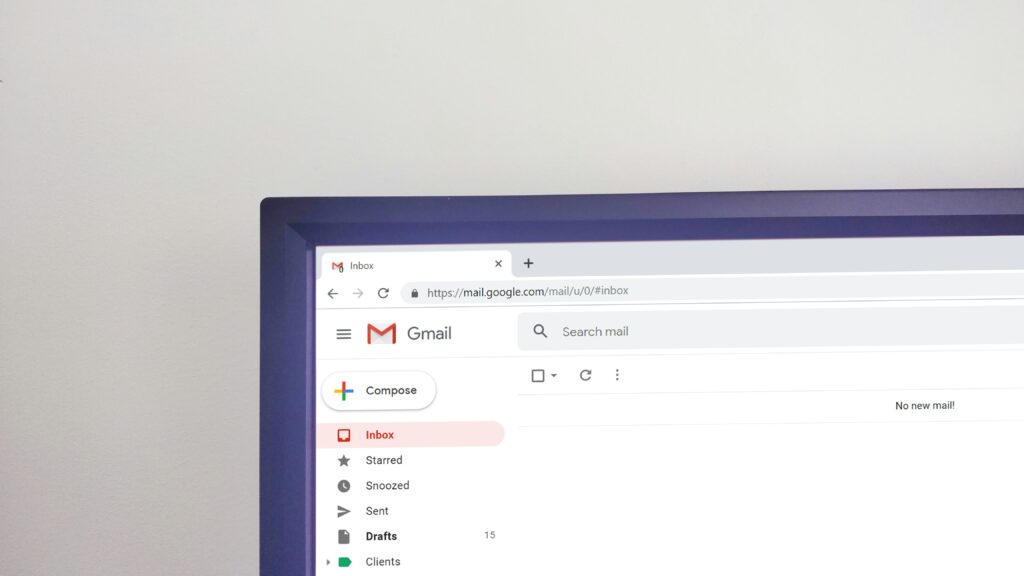In this blog, we’re unraveling the intricacies of the "post and pray" phenomenon, the truth behind what happens to the 100s of applicants that click on a post and expose the benefits of embracing passive recruitment specialists.

In the realm of modern recruitment, posting a job opening often feels like casting a message in a bottle into a vast sea of candidates, hoping for a miraculous response. The “post and pray” approach, as it’s affectionately known, involves unleashing a job listing onto various platforms and fervently praying for a flood of applications.
The optimism behind this approach is undeniable — the more applicants, the better the chances of finding the perfect fit.

However, as employers find themselves knee-deep in thousands of resumes, it becomes evident that the answer to their prayers may require a more deliberate and strategic intervention. As the saying goes, sometimes you need to hit your knees again, not in desperation, but in contemplation of the nuanced challenge that lies beneath the surface of this overwhelming response.
In this blog, we’re unraveling the intricacies of the “post and pray” phenomenon, the truth behind what happens to the 100s or 1000s of applicants that click on a post, and exposes why the quest for the right talent may necessitate a shift towards embracing passive recruitment specialists.
While a high volume of applications might seem like a positive indicator, statistics tell a different story. Did you know that 73% of potential candidates are passive job seekers who are currently employed but open to new opportunities? Source: Zippia: https://www.zippia.com/advice/recruitment-statistics/ This means a significant portion of the applicant pool may not be actively searching, and their resumes might get buried in the influx. Furthermore, the sheer number of applications can be overwhelming to sift through, leading to qualified candidates being unintentionally overlooked. The average job vacancy takes a staggering 42 days to fill, costing companies an average of $98 per day due to this inefficiency. Source: RecruitBPM
After all, when you are looking to make the right hire, going after what you want and “having it your way” is going to result in a much stronger outcome.
The Avalanche of Applications
In today’s market, it’s not uncommon for job postings to receive hundreds, if not thousands, of applications. Job seekers from various backgrounds flood online platforms, hoping to catch the attention of employers and secure that coveted position. While this may seem like a positive sign of a thriving job market, it also brings about challenges for both applicants and employers alike.

Picture this: you post a job opening, and within a few days, your inbox is flooded with resumes, cover letters, and portfolios. While this influx demonstrates a high level of interest in your company, it also poses a daunting task for HR professionals and hiring managers to sift through the sheer volume of applications. The truth is, that not every application receives the attention it deserves, and many qualified candidates might inadvertently be overlooked.
Why the Surge?
Several factors contribute to the overwhelming number of job applications. The ease of online applications, the accessibility of job boards, and the rise of remote work have all played significant roles in the surge. Additionally, economic uncertainties and changing industry landscapes often prompt individuals to explore new opportunities, further intensifying the competition.
Single-click applications through platforms like LinkedIn and Indeed are speeding up the process, although for candidates it can feel somewhat like throwing a penny into a wishing well. This brings up other issues, namely that candidates are clicking and clicking to see who they might hear back from without any real connection to the company.
The Need for Passive Recruitment Specialists

In the midst of this application avalanche, companies are realizing the importance of adopting a more proactive approach to recruitment. Enter the role of passive recruitment specialists. Unlike traditional recruiters who focus primarily on active job seekers, passive recruitment specialists seek out top talent who may not be actively looking for a job.
Benefits of Passive Recruitment:
Access to Untapped Talent:
Passive recruitment specialists identify and engage with professionals who may not be actively applying but possess the skills and experience your company needs.
Reduced Time-to-Fill Positions:
By proactively building relationships with potential candidates, passive recruitment specialists can significantly reduce the time it takes to fill critical positions.
Quality Over Quantity:
Passive recruitment shifts the focus from sifting through a large pool of applicants to carefully selecting high-quality candidates who align with the company’s values and goals.
Enhanced Employer Branding:
Actively seeking out talent showcases your company’s commitment to growth and innovation, enhancing its reputation as an employer of choice.
Building a Talent Pipeline:
Passive recruitment specialists work on building a talent pipeline, ensuring a steady stream of qualified candidates for future openings.
Retention and the Elusive Talent Pipeline:

Retention remains a persistent challenge for employers, particularly when it comes to nurturing a consistent talent pipeline. Employees leave organizations for various reasons, creating a perpetual need for companies to fill gaps in their workforce. While job postings attract numerous applicants, the turnover within industries often results in a transient candidate pool, limiting the available talent for certain positions.
The same is happening from an applicant standpoint. Out of those who start applications, only 16% make it through the process, and out of that, only 3%-4% make it past the ATS Gatekeeper, but we’ll save that for Part 2.
The Wrap Up
In the complex landscape of modern recruitment, the “post and pray” approach has provided a beacon of hope for employers seeking the perfect candidate. However, it’s clear that the answer to our prayers might require a more intentional and strategic intervention. The overwhelming surge of applications, coupled with the challenges of attrition and the elusive talent pipeline, unveils the need for a more active and intentional approach to hiring; the indispensable role of passive recruitment specialists, who offer a proactive solution to navigating the job application avalanche. These specialists not only identify untapped talent but also contribute to reduced time-to-fill positions, improved quality over quantity, enhanced employer branding, and the strategic building of a robust talent pipeline.
What to Expect in Part 2:
As we peel back the layers of the recruitment process, we’ve merely scratched the surface. In Part 2 of “Navigating the Job Application Avalanche: The Role of Passive Recruitment Specialists,” we’ll uncover the secrets behind what happens to the hundreds and thousands of applicants who click on a post. What lies beyond the ATS gatekeeper? What percentage of applicants successfully make it through the entire process? Join us in the next installment as we unveil the hidden realities, providing insights that go beyond the numbers and statistics, offering a deeper understanding of the challenges and opportunities in finding top talent. Stay tuned for a closer look at the journey applicants embark on and why a more nuanced approach is essential for both employers and candidates alike.
Let's Start a Conversation
TITUS INSIGHTS
Refreshing perspectives and practical expertise from the Titus team.
Committed To Radical Generosity
Our dedication to radical generosity keeps us focused on what matters most, and it allows us to make a trusted and lasting impact on the world around us. It’s the foundation of our culture and our partnerships.



